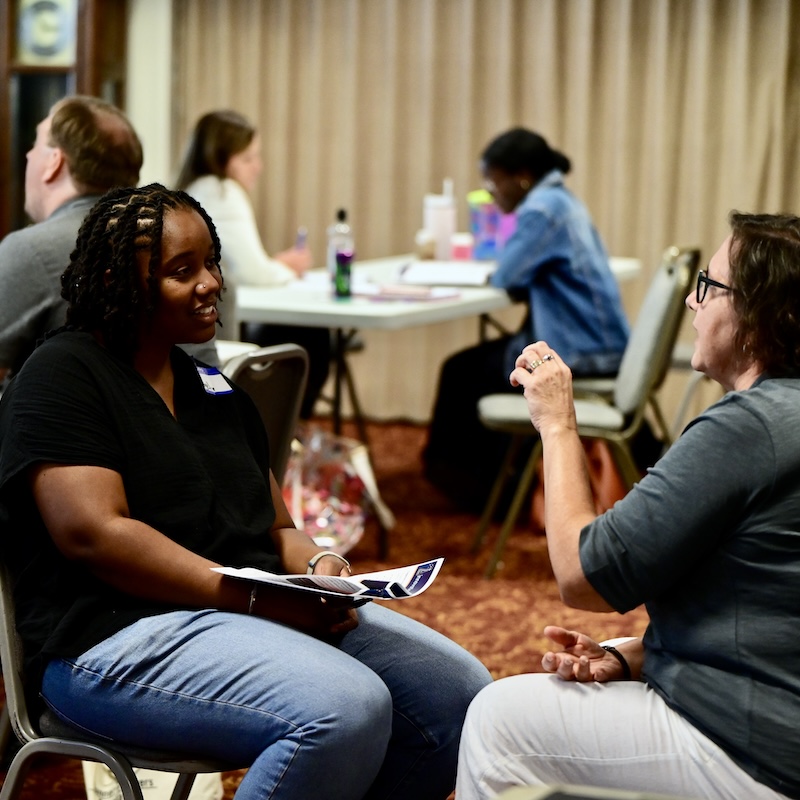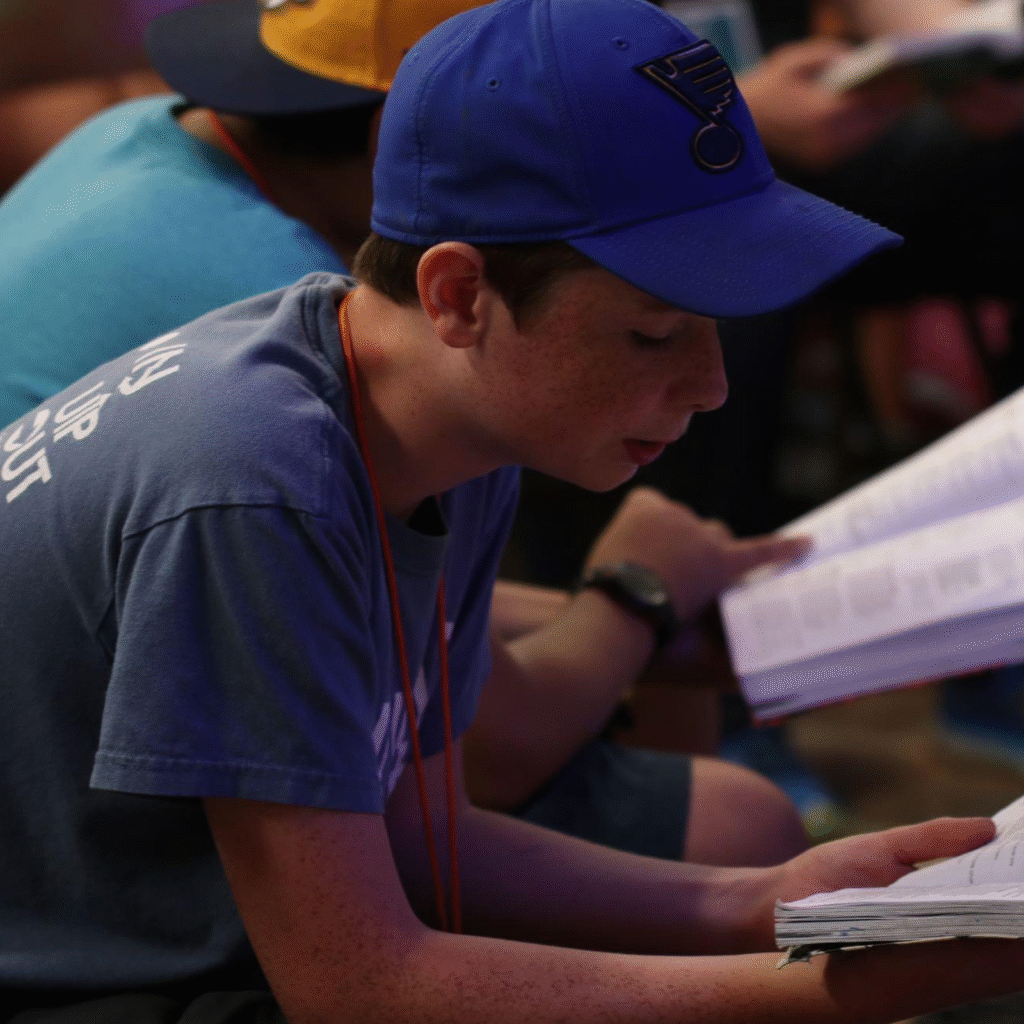No products in the cart.

by Joey Willis
The Christian doctrine of the Trinity can be both a comfort and a confusion to the modern teenager. On one hand, they are starting to experience for themselves the complexities of life. Their identities are marked by involvement in several different social, family, and athletic roles. They are not just one thing. They hate to have themselves stereotyped and boxed into one area of their personality (such as the baseball player, the cheerleader, etc.). They long to have the whole of their personhood accepted, understood, and celebrated. Therefore, the Trinity is a promising concept for them. It helps them understand that God is not just one thing. God does not appreciate being hemmed in and stereotyped any more than they do. But on the other hand, the Trinity is confusing. It can be a tough aspect of their faith for teens to wrestle with. How is our One God three separate things? What role does each play? Who am I dealing with? Which Person of the Trinity should I be praying to and asking for help?
I have found that a lot of teenagers just do not ask any prodding questions or allow their minds to linger on the issue of the trinity. They just take it at face value as part of the deal and do not worry so much about it. But this can be dangerous, because the doctrine of the Trinity is an important, essential, and distinct element of the Christian religion. What are the ways in which teens view each Person of the Trinity? What are the ways that we can accent that Person’s role while keeping with the unity of monotheism? Why are discussions on the Trinity important to teens and youth culture?
The first person of the Trinity, commonly referred to as “God” or “the Father,” is the initial form of deity that our children learn about. This is the distant God, who sometimes gets angry, and speaks to people through dreams and burning bushes. This is the God who spoke things into existence. The God of the Old Testament. Jesus’ daddy. Once our teens flip from Malachi to Matthew, they feel this Person of the God slip a little farther away. He is in the distance while Jesus is in the spotlight. Most teens see this God as the most powerful of the trio, but also the least accessible. Most of their prayers are aimed to God, because God seems like the One of the Three ultimately in charge of making things happen.
The neat thing about this perception of God is that it accents a lot of things about God that are important for our teens to know. The best part about this Person of the Trinity is the mystery that surrounds God. This is a dangerous and sometimes troubling thought to our teenagers, who suspect that God is millions of miles away, disinterested, and only quasi-involved. Those are dangerous side-effects that the other Persons must help resolve. But the reason those misconceptions are there is because this is the Person of the Trinity that is mysterious beyond our understanding. Teenagers need to understand that God is a deity. God exists and operates on a realm that we just cannot comprehend, that we have no business and no capacity to be a part of. This Person is also the agent of Creation and the God of the Old Testament fathers and prophets. We need to help teens see, however, that this God did not discontinue God’s interaction with humankind in the book of Matthew. It’s not like God passed the baton to Jesus who eventually passes it to the Holy Spirit. The same God speaks, just a different form. God uses a new method. God sometimes speaks in burning bushes, sometimes through incarnation, and sometimes through an accompanied consciousness. But it is all the same God speaking. God does not leave to make room for a new method, only a new manifestation of what has and will always be.
The second person of the Trinity is the one our teens are most familiar with. They view Jesus as the relatable One who has been through what they have been through and seen what they have seen. He is also the role of Savior, which is very important to all teens because they are all looking for some help, for someone to rescue them from the miry world. They see Jesus as one of them. A perfect version. They think of Him as a superstar healer and miracle worker.
The obvious greatness of the second Person of the Trinity is that He is relatable. Our teens feel like He is the most likely of the three to be real. The most tangible. The one who left evidence, a bloody cross, cured infirmities. He is the Person that youth can picture in their heads when they think about God. He left footprints and was a baby. He existed. Teens feel like they can know Jesus because He was a man. In today’s society, we are probably too willing to think of Jesus as a man and too forgetful of Him as a deity. A problem between within the perception of Jesus in youth culture is that He can be viewed as an old and gone entity whose work is done. When teens think of Jesus, their minds go back thousands of years to a thirty-six month period in old Jerusalem. Rarely and with difficulty do they think of Him as current, modern, living, breathing, and of continued pertinence. We often think of Jesus as having completed a task. Job well done. That He said all He had to say during His time on earth. Teens have trouble imagining the God who walked in sandals so many years ago as prevalent in their world today. They think of taking His old school lessons and applying them to current life but they do not view Him as alive within current life. They have an equally difficult time allowing Him to have pre-existed before His time on earth. Jesus gets type-casts into those few years for which He is best known. We need to stretch the youth beyond that and allow them to view in all time.
The third Person of the Trinity is without a doubt the most perplexing to today’s teenager. They are not sure exactly who it is and what it does. Which is a natural byproduct of all of us, since we never knew any different than when the Holy Spirit was there. When prompted, they can regurgitate the response that the Holy Spirit is the one who dwells within each of us and guides us in our path. The “Helper” that Jesus alludes to before He ascended.
We need to do a better job in helping teens understand who this Third person of the Trinity is. The trouble for teens is that this Person is the hardest to wrap our minds around because the Holy Spirit is the hardest to put your hands on, the least tangible. But the Holy Spirit is an intricate part of the Trinity for their development as adolescents. The Holy Spirit is the tiny voice inside that speaks for an all-loving God. Our teens need to learn how to find this third person and tune their hearts to the Holy Spirit. They need to be able to sync up their consciousness with the One who dwells within their consciousness. If for no other reason than the fact that they are least familiar with the Holy Spirit, we need to know the Spirit better. The Holy Spirit is the internal manifestation of the other two. The one that bleeds from the inside out as opposed to piercing from the outside in.
The most important task is to help the teenagers understand that these three separate entities are all one, united Deity. That all work and live and breathe together and have done so from the beginning of time, and will do so until the end of time. The Trinity is an important doctrine because it allows our teens to push through the boundaries that we normally force upon God. The box that we put God in does not hold. It is also important in establishing different characteristics of the Godhead that are essential to God’ nature and important in their interaction with God. This is who God is.
The challenge that faces us is to expose the Presence of this Godhead throughout their world. We have to point out the entirety of their deity in all facets of life. God dwells everywhere and within all. God is not bound by anything. God is beyond everywhere. Unified with the purposes of God, which are slowly being revealed to us, God has set out to conquer our world and bring it back to God.
The Trinity has been widely discussed and debated for centuries and our teens need the welcoming thought that they do not have to figure it all out. It is OK for us to be uncertain, to ask questions, to not know everything. God is beyond anything we can know. That is why we have to adopt ideas like the Trinity, to try and help us to understand an incomprehensible God a little bit better. And that is the whole point of ministry and the entire meaning of life. The doctrine of the Trinity has the potential to be a useful tool in helping our kids understand some of what God is and the significant and vast Presence of who God is.


